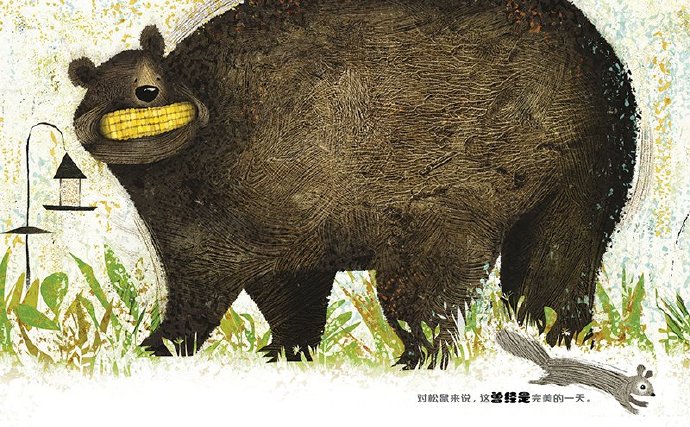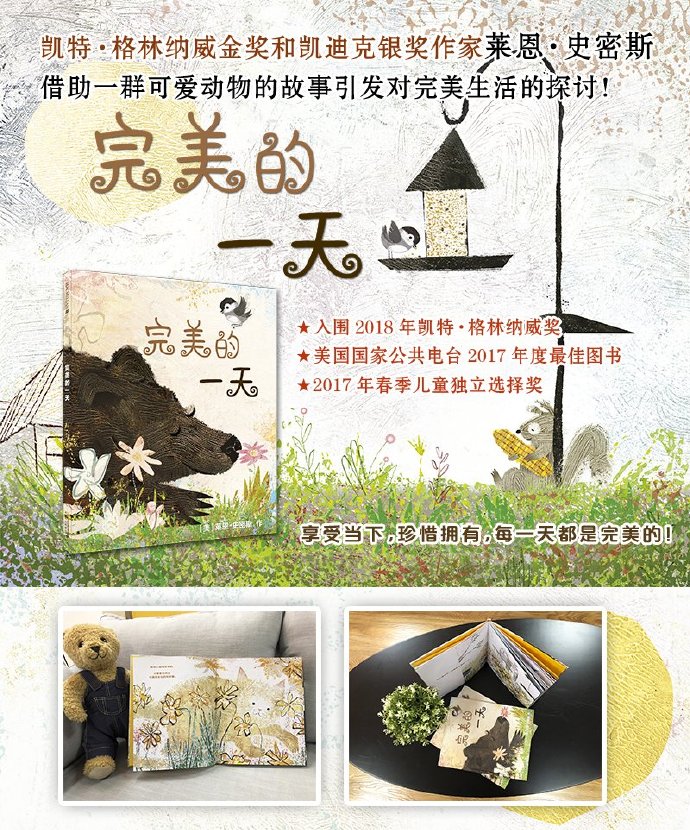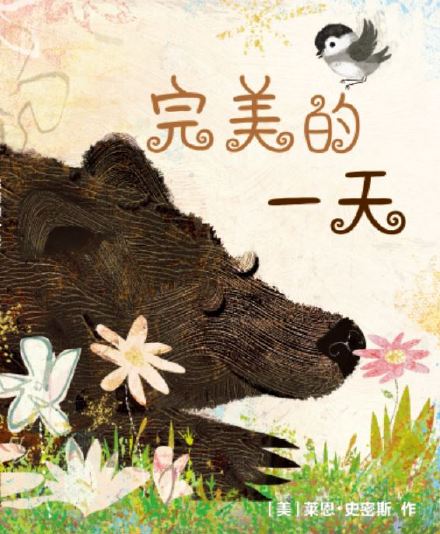
Lane Smith is an increasingly sought-after picture book writer worldwide. He has been writing for thirty years and has won numerous awards, most notably two Caldecott Medals (1993 and 2012) and a Greenaway Medal (2017). Over a dozen of his works have been translated into Chinese, but interestingly, unless you’re paying close attention, you can’t always attribute them to the same author.
For example, you might love “Grandpa Green’s Garden,” a quiet, beautiful, and brightly illustrated book. But would you believe that the same illustrator also drew the darkly humorous and subversive “The True Story of the Three Little Pigs”? A closer look might surprise you to discover that he also drew the incredibly bizarre “The Stinky Cheese Boy”!
Yes, Ryan Smith is a master of diverse styles. When asked what mediums he typically uses for his illustrations, he replies that he uses oil, pencil, ink, watercolor, computer graphics, collage, and so on. He uses every medium possible, depending on the needs of the specific work. In other words, he chooses the right style for the story. This is why he can create something truly bizarre, or he can create cartoonish, endearing, and playful characters like in “This Is a Book,” or he can create something incredibly naive and dreamlike, like in “Children of a Tribe.”
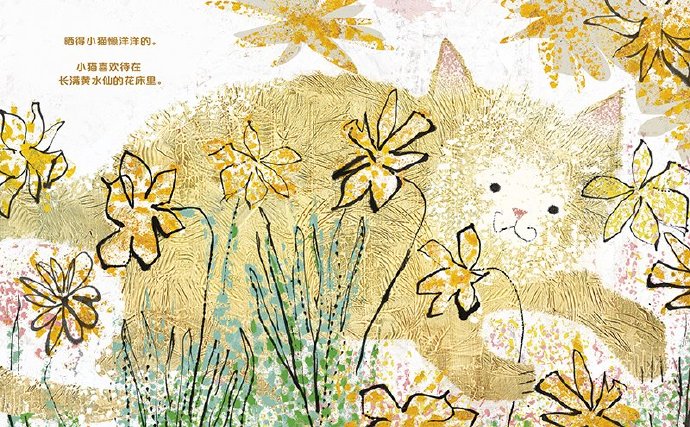
In “A Perfect Day,” he creates an incredibly warm, hazy, and nearly perfect world. The animals in the book—kittens, puppies, tits, squirrels, and bears—are all adorable, especially the smaller ones, which have a slightly furry feel. Up close, they don’t appear to have been directly drawn with a brush, but rather vaguely rubbed from somewhere. Thanks to the internet, we can easily follow Smith in a live video broadcast on The New York Times’ Facebook page, where he demonstrates how to create this effect at his workstation. He begins by drawing on a sheet of white paper, then immediately covers it with another sheet. The resulting hazy rubbing creates exactly the desired effect, which he then continues to manipulate. For him, creating a book like this is a game, and the randomness of the results makes it all the more fun. It’s easy to imagine that he conjured countless effects throughout the creative process, and the one presented to readers is only one of his final choices. I can’t help but wonder what a profound enjoyment it is for a creator so passionate about this craft to immerse himself in this magical process.
However, as a translator, I’m more concerned with the language of this book. Author Ryan Smith, too, delights in playing with language. He intended an audience that would be compatible with infants and toddlers, so aside from the essential names of plants and animals, he chose words of only one or two syllables, very simple in English. He avoided rhyming, which would have facilitated simple, fluent, and clear expression. Yet, he deliberately arranged the text like poetry, using repeated repetitions throughout the structure. This creates an architectural aesthetic and a clear rhythm. As you read, you’ll discover that this heartwarming little story is truly a poem.
At the climax of the story, his language game also reached its climax. A big bear broke into the yard where the kitten, puppy, tit and squirrel were enjoying themselves. From the surprised expressions and actions of the tit and squirrel, we already knew that something “big” was going to happen. But how was this “big thing” described in the text? The original English text actually just repeated the exclamations of the little animals four times, such as the squirrel’s “It
was a perfect day for Squirrel.” The description here is still “It was a perfect
day for
Squirrel.” The word “was” was just heavily bolded. What does this mean? Here we have to combine the picture. We see that the big bear holds the corn cob that originally belonged to the squirrel in his mouth, and the squirrel flees in panic in the lower right corner of the picture. We know that the author is playing a little bit of black humor here. The squirrel’s “perfect day” has become a thing of the past. Unfortunately, there is no way to use the same expression in Chinese. I can only translate the first part as “For the squirrel, this is a perfect day.” The second part becomes “For the squirrel, this is a perfect day.“onceIt was a perfect day.”
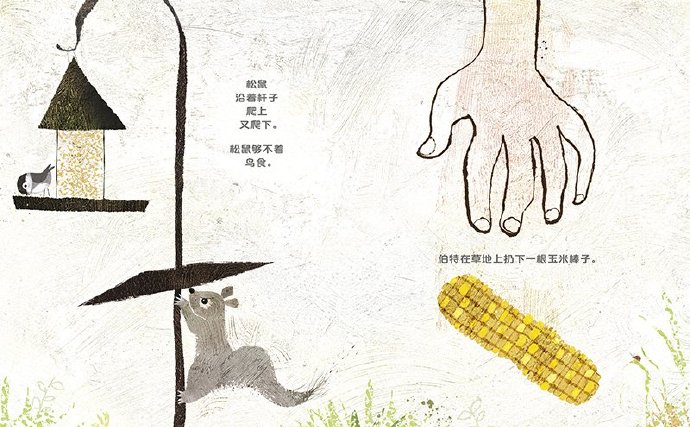
It’s a shame that the two contrasting meanings can’t be expressed in the same literal sentence. Fortunately, however, the main thrust and humor of Lane Smith’s story are largely preserved, thanks to the flawless illustrations. Finally, the reader sees the bear, well-fed and comfortably napping in a flower bed, and no doubt agrees, “It’s a perfect day for a bear.” But this also raises a new question: how should the kitten, puppy, tit, and squirrel evaluate this day? Isn’t this ending a bit unfair to the animals?
Out of curiosity, I checked reader feedback on Amazon and Goodreads in the US. I found that the vast majority of readers were delighted with the ending, enjoying the author’s subtle touch of dark humor. They also thought it was a great example of helping children understand how different perspectives can lead to different attitudes toward the same situation. I agree. Furthermore, the big bear’s appearance and the “stealing” of the animals’ perfection was a perfectly natural process, ideally handled with a lighthearted humor. But I think the author didn’t stop there; he actually provided a perfect ending for the animals as well. The final scene is an oval frame, itself a perfect shape. Within the frame, the animals, though somewhat nervously staring at the intruding bear, are actually huddled together with their good friend Bert. While the bear’s situation is certainly perfect, aren’t theirs as well? Enjoying life with friends is perfect, and hiding in a shelter with friends and feeling a little anxious is also a kind of perfection, isn’t it?
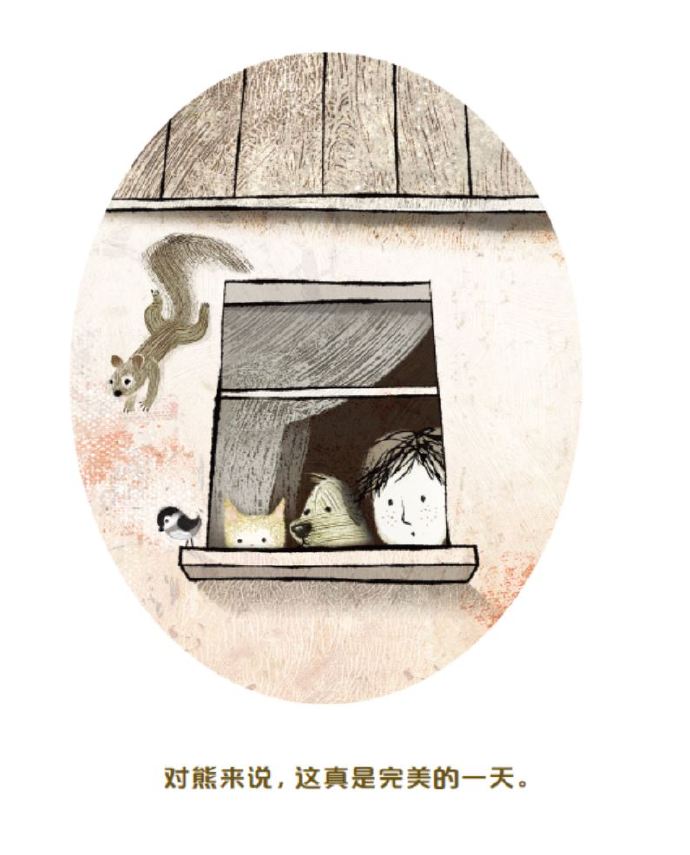
Going back to the beginning of the story, attentive readers will find that it is indeed the flower beds, paddling pools, bird feeders and corn cobs that make the kitten, puppy, tit and squirrel feel perfect, but wasn’t it their good friend Bert who prepared all these for them? So, what really makes life more perfect is the caring companions.
Ryan Smith’s work is indeed becoming increasingly sophisticated, but when reading his picture books, it’s easy to overlook a small detail—one that requires careful attention. Almost all of his picture books, including “A Perfect Day,” are designed by a single person: Molly Rich. Molly designed “The Stinky Cheese Boy,” published in 1992, her first book for him. It’s hard to imagine that without her bold use of such wildly bizarre and incredibly playful design techniques, the book would have won the Caldecott Medal the following year. Ryan is deeply grateful to Molly, and in interviews he often expresses his disapproval of her, saying that most readers, unaware of book design, tend to attribute the visual success of a book solely to the illustrator. Ryan says that without Molly’s designs, his books wouldn’t have achieved such success.
Today, Ryan and Molly collaborate almost daily. These two quiet artists exchange numerous emails, sharing ideas and works, but they work in the same studio, only 10 steps away from each other. They both find this collaboration perfect.

By the way, they have been married for many years. You see, the world is perfect like this!
Ajia …
Written on September 16, 2017
